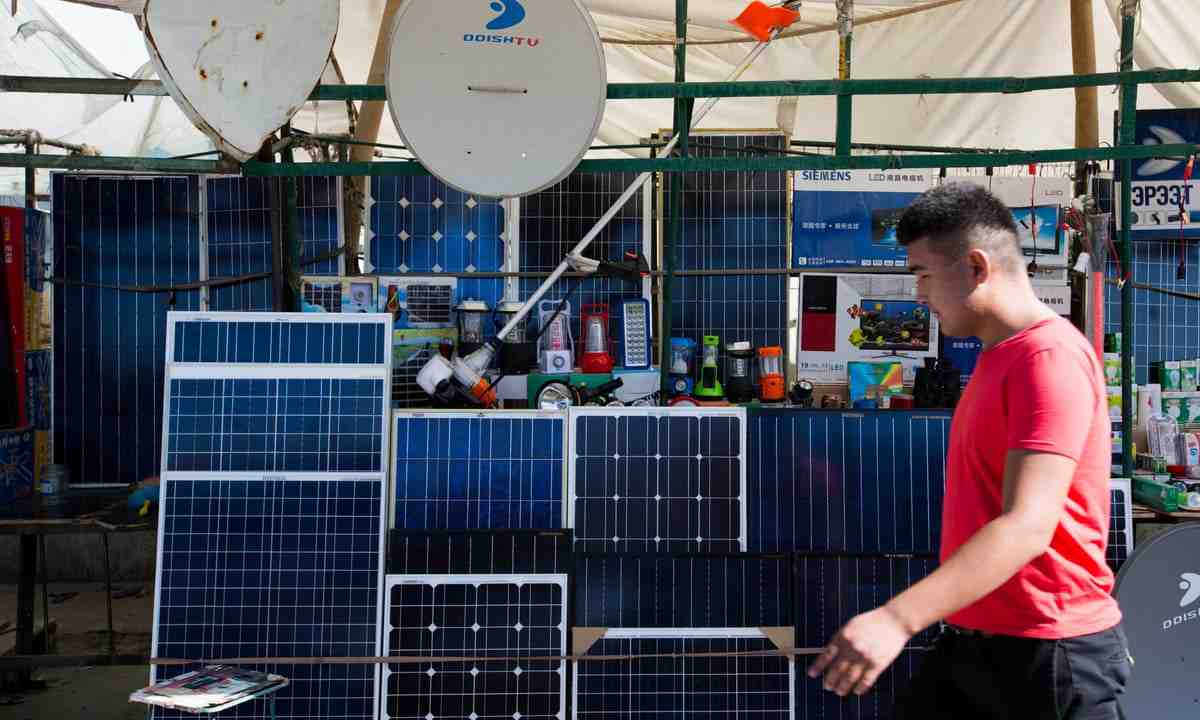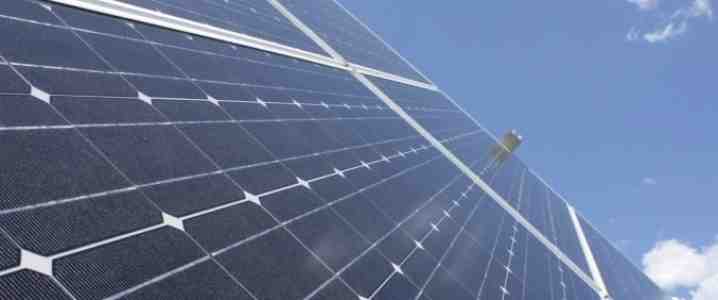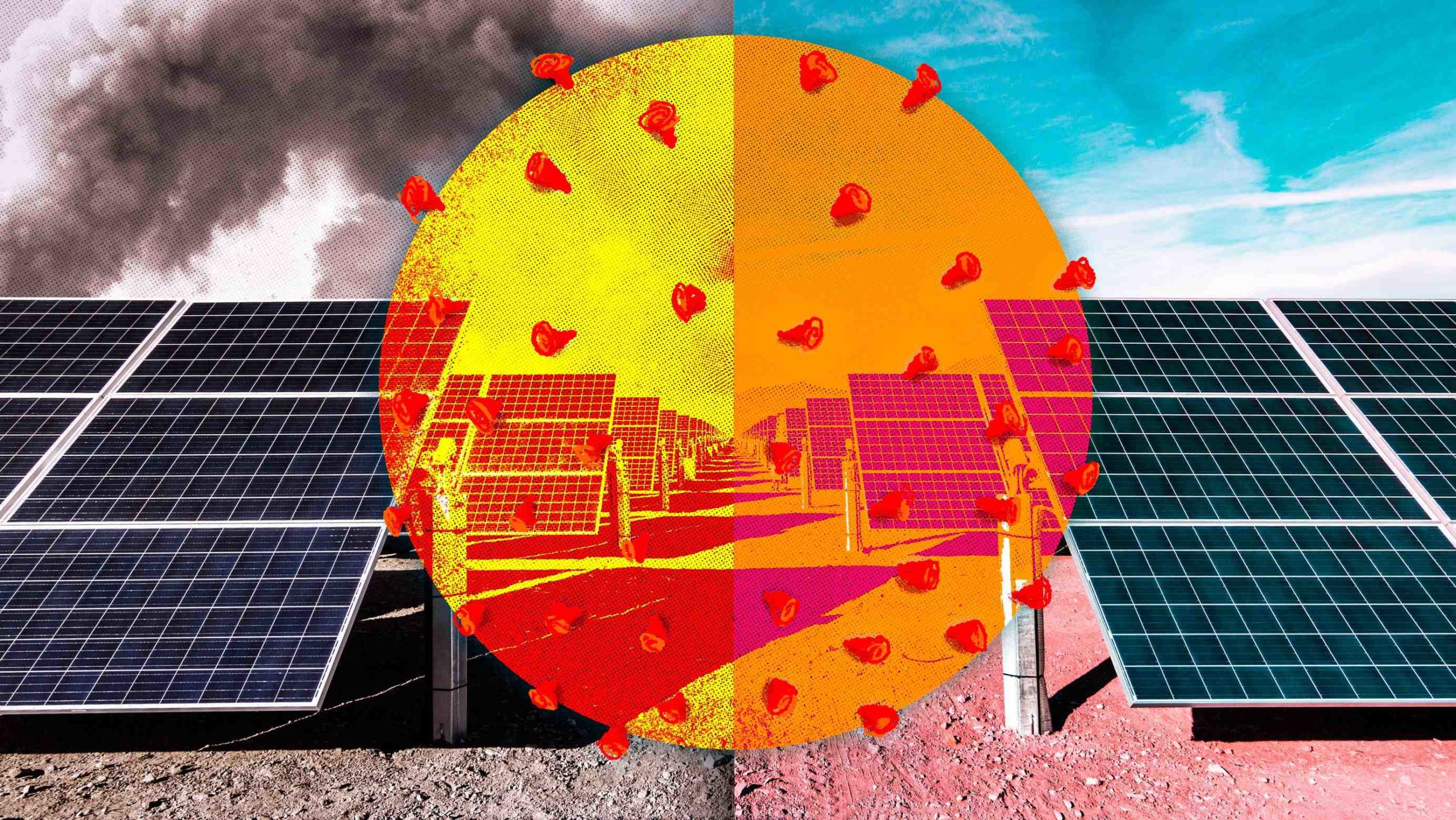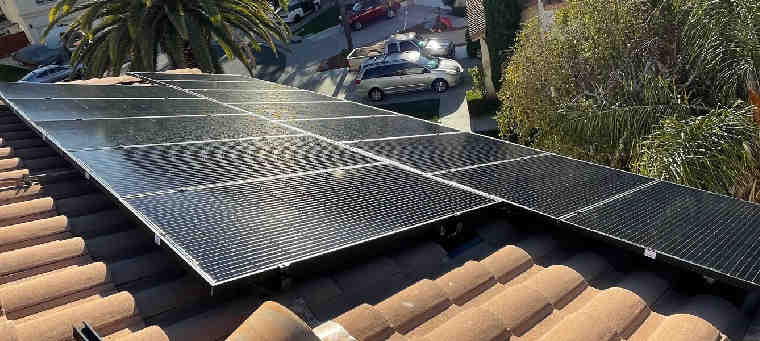With heat waves being reported around the world, causing wildfires and other environmental concerns, at least one energy sector is getting attention for its major production potential: solar power. But because solar panels harvest energy from the sun’s radiation, global warming may (unexpectedly) have little benefit to solar energy production. However, this does not stop consumer interest from increasing as people are encouraged to invest in solar technology due to hotter summers and rising consumer prices. With many parts of the world having some of the hottest summers on record in decades, it must be doing wonders for solar power, right? As the world warms, people may think that more sun will mean more solar energy, even though it has been negative for many other reasons. But rising temperatures can hamper the production of solar energy, because solar panels operate at around 25oC and become less efficient when the heat gets too high. And while the heat isn’t hindering the sun’s production, it’s doing little to help.
With record temperatures across Europe this summer, with the UK reaching 40oC in July, solar farms have seen positive output levels, with Solar Energy U.K. reporting on July 20 that the country’s solar power output was “a quarter full”. of the UK’s power demand”. But this is mainly due to the country seeing more days of sunlight rather than higher temperatures.
Of course, when there is sunshine there is solar energy. But because of the way solar panels work, they are slightly less efficient, about 0.5 percent, at any degree above or below 25oC. This means that in much of the world, peak production periods often occur in the cooler spring months rather than summer. Although Solar Energy UK believes that significant outages would only be seen if temperatures rose by 65oC or more. The company’s CEO, Chris Hewett, said: “It’s a little bit better for efficiency in the spring, but basically if you have more light, you produce more solar energy.” He added: “You have to remember that solar panels work all over the world. The same technology we put on our roofs is used in solar farms in the desert of Saudi Arabia.’
But uncertainty about what rising temperatures will mean for solar panel productivity has not stopped interest in solar power rising as the public sees a correlation between warmer weather and solar power production. As countries around the world rapidly increase consumer energy prices, utility bills are costing hundreds or thousands more people an extra year. This has helped move public opinion in favor of the rapid construction of strong renewable energy sectors, as well as the installation of home solar technology, as oil and gas see their limits.
Governments have been trying for years to stimulate public interest in solar and wind power, even by offering household tariffs, where payments are made to people who produce their own solar power to encourage the installation of solar panels at home. Governments have offered to buy solar power from grid-connected home producers and subsidized the cost of solar technology and installation in many parts of the world. And while usage has steadily increased, the recent rise in energy prices may be the factor driving consumers to make the switch on a wider scale.
In the UK, the number of searches for solar panels and solar batteries on eBay increased by 54 percent and 134 percent in June compared to the same period last year. Demand for products to track and reduce energy consumption, such as smart meters, has also increased. In 2020, a government report indicated that around 970,000 homes in the UK had solar panels, just over 3 per cent of homes, and power production had increased from 1MW in 2008 to 11,730MW in 2020. According to UK credit company Experian, around 1.9 million households are expected to install solar panels or other renewable energy technologies by 2022, showing a significant boost in public interest.
Many consumers are put off home solar energy due to the high cost of installing solar panels. But with electricity and gas bills continuing to rise in 2023 and beyond, many are seeing the potential value of the initial cost. With installations in the UK averaging between $6,000 and $18,000, households are likely to recoup the cost of the installation in less time, and halve the years it takes to pay back the money if energy bills continue to rise.
Although the heatwaves we are seeing around the world will not increase solar production as many thought, they have stimulated interest in solar technologies. As consumers see rapidly rising energy prices and warmer, sunnier days, many are now turning to renewable energy sources such as solar power as an alternative to help them save money and become more self-sufficient.
By Felicity Bradstock for OIlprice.com
Top Reads on Oilprice.com:
Wind is a more efficient source of energy than the sun. Compared to solar panels, wind turbines emit less CO2 into the atmosphere, consume less energy and generally produce more energy. In fact, one wind turbine can generate as much electricity per kWh as about 48,704 solar panels.
Does solar power create pollution?

Solar energy technologies and plants do not produce air pollution or greenhouse gases when operating. This may interest you : Floridians brace for solar panel tax credit in climate bill. The use of solar energy can have a positive and indirect impact on the environment when solar energy replaces or reduces the use of other energy sources that have a greater impact on the environment.
What are the negative effects of solar energy? Environmental disadvantages of solar energy include habitat loss, land use change, stress on water resources, exposure to hazardous materials, and pollution of soil, air, and water resources.
How is solar power harmful to the environment?
Solar panels are made up of photovoltaic cells that convert sunlight into electricity. When these panels end up in landfills, valuable resources are wasted. This may interest you : Renewable energy powers ahead in 2020: report. And because solar panels contain toxic materials that can leach out as they break down, the landfill also creates new environmental hazards.
What is solar explain?
Solar technologies convert sunlight into electrical energy through photovoltaic panels or mirrors that concentrate solar radiation. This energy can be used to generate electricity or stored in batteries or thermal storage.
What are the 3 types of solar energy?
Solar thermal (for heating) Concentrated solar energy (for electricity) Solar photovoltaic (for electricity)
What is solar energy in simple words?
The answer is simple: solar energy. Solar energy is simply light and heat from the sun. People can take advantage of the sun’s energy in several ways: Photovoltaic cells, which convert sunlight into electricity. Solar thermal technology, where the sun’s heat is used to make hot water or steam.
How much pollution do solar panels create?
About 50 g of CO2 per kilowatt-hour is produced during the first years of operation of the solar energy system. The carbon footprint of solar panels is 20 times lower than the carbon output of coal-fired electricity sources.
Do solar panels pollute land?
Although solar generation is emission-free, the construction process can have adverse effects on the environment. The process of producing raw materials and producing location facilities disturbs local ecosystems. PV panels require some rare materials, such as silver, whose extraction is energy intensive and polluting.
Do solar panels cause light pollution?
Solar panels are also a source of light pollution. Improper disposal of solar cells that have reached the end of their life damages the environment due to the stench they create and the damage they cause to the soil.
What are three problems with solar power?

Environmental impacts associated with solar energy include land and water use and pollution, habitat loss, and the use of highly hazardous materials in the manufacturing process.
What are the 3 challenges of using solar energy? Disadvantages of Solar Energy
- the cost The initial cost of buying a solar system is quite high. …
- Depends on the weather. Although solar energy can still be collected on cloudy and rainy days, the efficiency of the solar system decreases. …
- Solar energy storage is expensive. …
- Uses a lot of space. …
- Related to pollution.
What is the main problem with solar power?
Intermediateness One of the biggest problems with solar energy technology is that it is only generated while the sun is shining. This means that overnight and cloudy days can disrupt the supply.
What is the main problem with solar panels?
The main arguments against solar panels are that they require more energy and fossil fuel burning equipment to operate, manufacture and transport than they save. Another argument is that toxic chemicals are used in the manufacturing process, which does more harm than good.
What wastes are produced by solar panels?
Solar panel waste can contain heavy metals such as silver, lead, arsenic, and cadmium, which – at certain levels – can be classified as hazardous waste.
How do solar panels affect the environment in a bad way?
Solar panels are made up of photovoltaic cells that convert sunlight into electricity. When these panels end up in landfills, valuable resources are wasted. And because solar panels contain toxic materials that can leach out as they break down, the landfill also creates new environmental hazards.
Which is a disadvantage of solar power?
High initial material and installation costs and long ROI (however, with the cost reduction of solar over the last 10 years, solar is becoming more and more expensive every day) It takes a lot of space, as efficiency is not yet 100%. No solar power at night, so a large battery bank is needed.
What are 5 Advantages and disadvantages of solar?
Solar energy is non-polluting and emits no greenhouse gases after installation. Reducing dependence on foreign oil and fossil fuels. Clean renewable energy available every day of the year, even cloudy days produce some energy.
Do solar panels work with moonlight?

Since moonlight is simply sunlight reflected off the moon, you’ll be happy to hear that the answer is yes: solar panels technically work with moonlight.
Do solar panels work with artificial light? Can solar panels be charged without sunlight? This may come as a surprise, but technically, yes. Solar panels can charge with visible light other than sunlight. Artificial lights such as fluorescent bulbs can be used to charge solar cells, provided the light is strong enough.
Do solar panels work better on the moon?
Placing solar panels on the Moon would be a very quick and easy way to reduce our dependence on fossil fuels. Solar panels on Earth are ineffective because half the time it is dark and often cloudy. The panels on the moon mean we could get energy even when the Earth is dark – and there are no clouds on the Moon.
What is solar power vs solar energy?
Solar energy is energy from the sun that is converted into thermal or electrical energy. Solar energy is the cleanest and most abundant renewable energy source available, and the US has some of the richest solar resources in the world.
What is solar explain?
Solar technologies convert sunlight into electrical energy through photovoltaic panels or mirrors that concentrate solar radiation. This energy can be used to generate electricity or stored in batteries or thermal storage.
What are the 3 types of solar energy?
Solar thermal (for heating) Concentrated solar energy (for electricity) Solar photovoltaic (for electricity)
Will solar panels charge from moonlight?
The answer is a definite YES, because Moonlight is nothing more than reflected Sunlight. Solar PV panels convert moonlight into electricity. It can be used to power PV cells at a cost of 345:1, meaning a panel that would produce 3450W at noon would only produce 10W of power during a full moon.
How can we use solar energy at night?
Surplus energy generated during the day is stored in a solar battery solution, such as the Tesla Powerwall. At night, when the solar panels are in sleep mode, you can use the energy stored in the battery system to power your home.
Can you use energy from solar panels at night?
Do solar panels work at night? While solar panels can still work on cloudy days, they cannot work at night. The reason for this is simple: Solar panels work on a scientific principle known as the photovoltaic effect, where solar cells are activated by sunlight, creating an electric current.
How many solar panels would it take to power a house?

How many solar panels does the average house need? With a house of approximately 1500 square meters, it is estimated that 15 to 18 solar panels will be needed.
How much power can I expect from a solar panel? The average solar panel produces 170 to 350 watts per hour, depending on the region and weather conditions. This works out to about 0.17 kWh to 0.35 kWh per solar panel.
How many watts of solar panels do I need to power my house?
Divide your average hourly power requirement by the number of peak hours of sunlight per day in your area. This gives you the amount of energy your panels need to produce each hour. So the average US home (900 kWh/month) in an area that receives five peak hours of sunlight per day would need 6,000 watts.
How many watts of solar panels does the average house need?
But in general, residential solar panels are expected to give you between 150 – 370 watts. This translates to an average solar panel power of 15 watts per square foot.
How many solar panels do I need for a 2000 sq ft home?
On average, a 2000 square meter home would need a 4 kW system, which is 10 400 watt panels.
How much solar power does a 2000 square foot family home typically use?
Therefore, a 2,000 square meter home will be allowed a 4,000 watt solar array. Depending on the type of panel you choose, a system of this size would be 12-18 solar panels.



